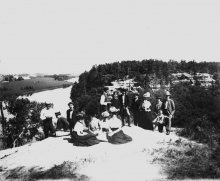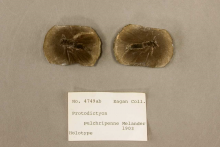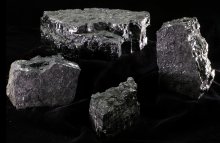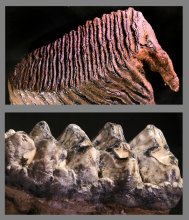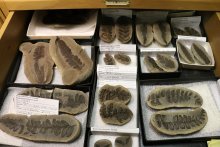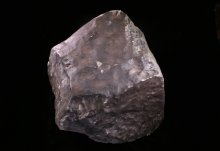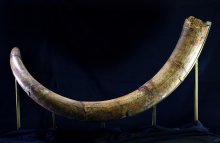Field trips, like the one pictured here, were among the many ways the Chicago Academy of Sciences actively included the Chicago community in its scientific work and promoted the appreciation of nature.
Illinois is home to a fossil site called Mazon Creek, which contains plant and animal fossils, as well as hard and soft tissue preservation. Fossils from the Mazon Creek area are found in the Francis Creek Shale in the Braidwood – Coal City area of Illinois.
Coal has been mined in Illinois since before statehood. French explorers documented coal seams being exploited near Ottawa 350 years ago. The first record of coal being mined (or dug) by settlers in Illinois was in 1810. The formation of coal dates back much further, up to 350 million years ago during the Pennsylvanian Period. The state owes its vast coal reserves to now-extinct trees, ferns, and other plants that lived, died, and piled up in the coastal lowlands of the shallow seas that once covered much of the state. Dying plant matter accumulated and was preserved in water. Those deposits were later buried by sediment and eventually transformed by extreme heat and pressure into lignite and finally coal.
Call them Pyrite Suns, Pyrite Dollars, Miner’s Dollars, or even Sun Dollars; just don’t call them fossils. They may look like fossilized plants, but the crystal structures actually formed deep underground under great pressure about 350 million years ago. These round disks sometimes occur between seams of coal and may be found when coal is mined. Although pyrite is quite common worldwide, the disk form is virtually unique to Illinois.
When it comes to Mammoths and Mastodons, the difference is more than a matter of pronunciation. They are very different prehistoric animals with distinct evolutionary and natural histories. While Mammoths are close relatives of modern elephants, Mastodons are only distantly related to the others. Mammoths and Mastodons inhabited separate habitats during the Pleistocene Era (2.6 million to 12,000 years ago). They are often confused, and their scientific names don’t help matters much. The American Mastodon is Mammut americanum, while the Wooly Mammoth is known as Mammuthus primigenius.
This unique assemblage of fossil flora and fauna gets its name from the Mazon (pronounced Muh-zon) Creek (River) that serves as a tributary to the Illinois River in northeast Illinois. A portion of the fossil beds are now within the Braidwood State Fish and Wildlife Area, and fossil collecting is allowed by permit. Not only do the fossils help scientists reconstruct past climates and species composition in Illinois (at that time the state was located much closer to the equator), but they are also starkly beautiful.
If you think 200 years of statehood is a significant milestone, consider this: trilobites, in one form or another, lived in the seas that once covered Illinois for a span of almost 300 million years. The oldest specimens date to about 500 million years ago, while the last trilobites died out about 200 million years ago. This specimen dates back to the Silurian Period (408-438 million years ago) and was found near Grafton, Illinois.
Well before Illinois became a state, Native American tribes (the Sac and Fox) living in the area mined galena ore (lead sulfide), the source of lead. Pioneer settlers also exploited the area’s lead resources, eventually displacing the Native Americans who first mined here. In the 1820s, galena ore became the focus of the first major “mineral rush” in the United States. By the end of the 1820s, the city of Galena rivaled Chicago in size.
The first and largest meteorite ever to strike Illinois (at least in recorded history) fell to Earth in three large pieces near the town of Tilden in southwest Illinois 91 years ago. About 1 p.m. on July 13, 1927, witnesses reported a sound like an airplane passing overhead and backfiring. In fact, a large meteorite exploded three times as it streaked through the sky, rattling windows and shaking dishes.
Discovered by an excavation crew in 1926 on the bank of the Ohio River near Golconda in Pope County, this Wooly Mammoth (Mammuthus primigenius) specimen didn’t come quietly. Illinois State Museum Director Aljah R. Crook worked with the crew on scene to recover as much of the Mammoth skeleton as possible.
Pages






